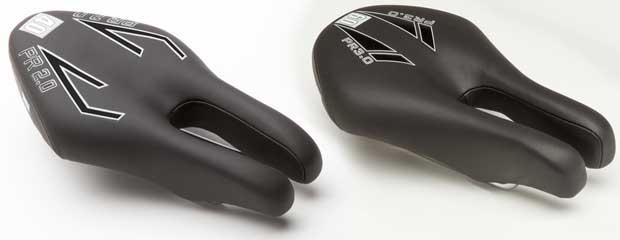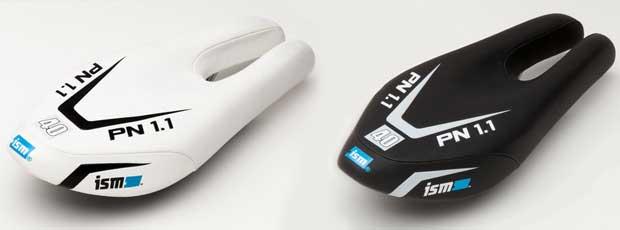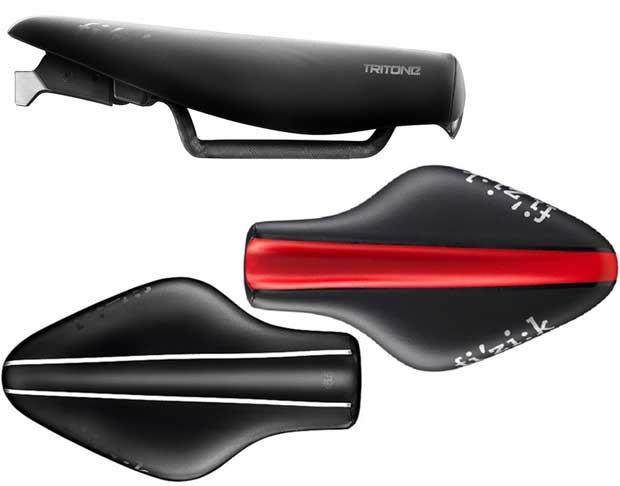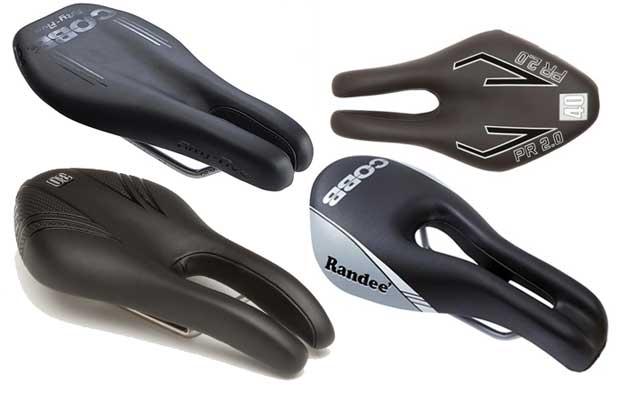Proper use of ISM and fi’zi:k
Last week I wrote of split-nose or noseless saddles in general. Let's drill down to specific saddles I like and will recommend to you. I'll do this over a couple of installments.
I took a flash poll of Slowtwitchers recently and 20 percent of the 642 who answered said you don't ride a split-nose saddle, meaning the rest of you (I presume) do. Should split-nose have this much market share? I don't know. It depends on whether readers are counting snub-nosed or truncated saddles like the fi'zi:k Tritone or those from Bontrager, Specialized, Prologo, Fabric.

ISM is the most successful maker. They name their saddles by use rather than shape, though this does not make the line entirely clear. What is “Performance Recreation?” Performance or recreation? I don't know but I like the Performance Recreation (PR) series and I do recommend it.
I've been predisposed to the squared-off front-ends of the ISM Road and Racing, and these have given way to the PR series inside which there are 3 models: 1.0, 2.0, 3.0. I've had pretty good luck with the PR 2.0 this year so far, as long as the rider sits on the very front of this saddle, resting the ischeal tuberosities right on the front. These ISMs slope up a bit after the first 6cm or 7cm of flat section and this upslope might help keep you placed where you're supposed to be.
ISM saddles that are narrower overall, with a less abrupt leading edge (curved rather than blunted "noses"), with narrower flanges, seem to me best matched with riders who have a little more of this saddle under them.
The snub-nosed series of saddles are evident in the PS and PR. PS stands for Performance Short, PR Performance Recreation (the PR 2.0 and 3.0 are above). I hope I don't cheese off anybody too much but if I was a retail fitter I don't that I'd even carry the PS series. Yes, these are the new style designations for the previously very popular Road and Racing. The thing is, I just think all today's saddles need more padding. Hear me out.
I know that this is not popular speak among saddle designers, but here is what I've been noticing: saddles are migrating to less and less padding, while cycling bibs are migrating to a chamois with more and more padding. What your apparel maker given your saddle maker taketh away. Yes, shape is important, and matching saddles to riders' bottoms is important, but I don't know when and while padding went out of style. Firmness in the padding? Yes. Less padding? Hmm.

That said, I can live with the idea of a firmer saddle for road, but not for tri. Saddles have gone away from padding when they should have gone more toward it. A nice saddle is the PR 2.0, which has more padding than the PS series. It's not got quite as much as the PR 1.0, but the 2.0 has upgraded foam and gel. The more padding you put in a saddle the higher the quality you need. The 3.0 (used to be called the Typhoon) has more padding yet, but this saddle is a little bulkier, a little wider. If I was a retail fitter I'd have the PR 2.0 and 3.0 in my studio.
The PN 1.1 (just above) is one of those that slope toward the front, and has more padding that its cousins. I'd have this in my studio. The PN series replaces the Attack and the PL replaces the Podium. Yes, these are popular tri saddles but I assume when you choose and ride this you won't have the leading edge 6cm or 7cm behind the nose of a standard saddle you're casting off to replace with an ISM. Rather I might move the front of a PN series saddle 3cm or 4cm behind a standard saddle's nose, or 2cm to 3cm in front of a snubbed-off ISM's leading edge.
All these saddles I'm selecting above have steel or chrome moly rails, and sell from $120 to $150 in the main. Likewise the saddles below (maybe up to $180) in the configurations I'd use. Titanium rails in a saddle? Carbon? Fine, but it's an expensive way to try to save weight and I'm a little too thrifty to spend my money that way.

I would definitely have the fizik Trinone in my fit studio. This is not a noseless or split-nose saddle, it is a truncated saddle. The front is just hacked off. There is a deep valley in the saddle. There are 2 widths to this saddle, 55mm and 65mm (above the red groove is the 55mm and the black groove is the 65mm version). I've polled more than a dozen very good triathlon retailers and none of them know this. Either the messaging is bad on this saddle, or the listening is bad. I would absolutely have both widths of the Tritone in my retail fit studio.
Where ought the Tritone be set up along the fore/aft gradient? Slowtwitcher David Bowden measures every saddle from its nose or leading edge back to the point where the saddles flanges meet 70mm in width. David's reasoning, I think, is that your thighs will be obstructed by a saddle this wide or wider, which means the flange determines the saddles placement, not the nose. Is this sound reasoning? I don't know, but it's an interesting metric and the Tritone is the saddle with the shortest distance between its leading edge and a 70mm flange width: 79mm. this argues that the Tritone should be set up like an ISM PR series saddle (pushed back a bunch).
In my opinion, all of these saddles, and all the saddles in my second installment, ought to be ridden with the front third of the saddle with a slight downward tilt, but not enough so that the rider feels like he's sliding off the front.




Start the discussion at slowtwitch.northend.network